Build the perfect core routine with just four exercises
We outline core exercises to help you stay strong and injury free on the bike
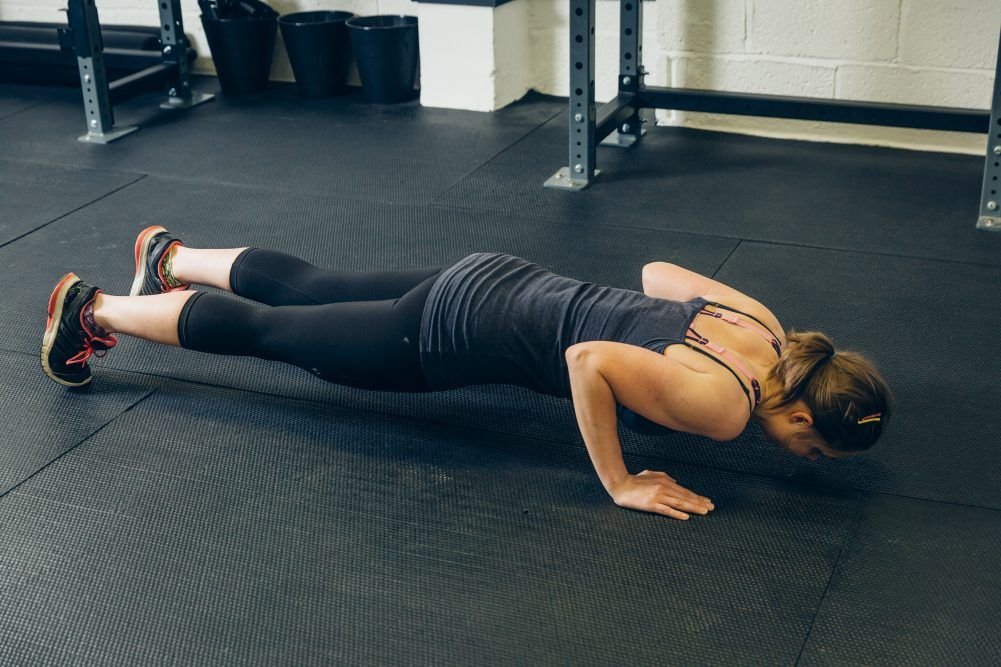

We've all heard talk of the mystical 'core' and its importance for cyclists, but as a general rule most riders regard time spent training this area in much the same way they do the edible kind: we'd rather chuck it away to devote more time to the fleshy goodness of hours in the saddle.
However, one or two sessions a week devoted to strengthening the biggest muscles in the body can go a long way in boosting power and keeping you on the bike.
"The 'core' is quite a misunderstood term. What we're trying to strengthen is the body, minus the legs and arms," explains head coach and owner at Surrey Strength and Performance, Dan Iaciofano.
"Having a stronger core will allow you to transfer more power through the legs, as well as reducing the instance of injury and improving your posture."
Want more benefits? Since a lot of cyclists spend much of their time pushing out endurance miles, some gym time can help build fast twitch muscle fibres. Plus, adding in some weight bearing and loading exercises is good for bone health.
Build your own core strength routine for cycling

Iaciofano, who trains National level athletes across a range of sports as well as cycling, suggests that riders should look to include four specific exercise types.
"Make sure you have a balanced programme - which addresses all the key needs. Within the upper body, you need a push and a pull movement, then include a hip dominant and a knee dominant lower body exercise. In those four movements, you have pretty much the whole body covered" he says.
Get The Leadout Newsletter
The latest race content, interviews, features, reviews and expert buying guides, direct to your inbox!
What to include in your cycling core strength programme
Each session you do in the gym (or, at home) should contain one of each of the following movements:
- Upper body: push movement (push up, single arm overhead press) - 1 of these
- Upper body: pull movement (pull up, single arm row) - 1 of these
- Lower body: hip dominant movement (sliders, deadlift, hip thrust, step up)- 1 of these
- Lower body: knee dominant movement (squat, step up) - 1-2 of these
All of the exercises below include variants you can do at home, but Iaciofano does suggest you run through correct form with a coach or personal trainer before you start out, to ensure you'll get the most from the time you put in.
How many reps?
Split your session into two parts. After a good warm up (which could include an easy ride to the gym, and some mobility/stretching), choose a pull and hip dominant exercise and then a push and one or two knee dominant exercises. Do four sets of each, starting with six to 10 repetitions.
You can switch the exercises up. For example, if you're in the gym twice a week your sessions may look like:
Session one:
- 4 x 6-10: Split squat (knee dominant), pull up (pull)
- 4 x 6-10: Hamstring sliders (hip dominant, hamstring), Overhead press (push), Hip thurst (hip dominant, glute)
Session two:
- 4 x 6-10: Front squat (knee dominant), single arm row (pull)
- 4 x 6-10: Deadlift (hip dominant, hamstring), push up (push), Step up (hip dominant, glute)
As you progress, the number of repetitions and weight can be adjusted depending upon the goal and time of year.
High reps with a lower weight will build muscle, but result in heavy DOMS - so are best saved for winter whilst low reps with a heavy weight will fire up muscles and create adaptation with less damage.
There's no need to worry about "bulking" up, either.
"You won't put on weight unless you're in a calorie surplus. Cyclists are also usually completing high volumes of endurance training, so it's hard to build muscle, and the exercises and sets suggested are nowhere near enough 'bulk out'. Body builders would do 20-30 sets to get the 'pump' they're after," explains Iaciofano.
Push movements
The push movements are mostly upper body exercises, but cyclists should not shy away from these.
"Upper body strength will help because you'll be stiffer through the midsection, which means less energy leakage and more power through to the pedals," Iaciofano offers.
Push-up
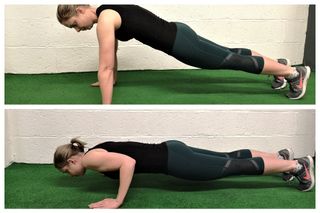
How to:
- Place hands below shoulders
- Lower yourself, until your nose is at the floor, keeping the core tight and body in a straight line
- Push up from the floor, try not to sag at the lower back
- Repeat
Make it easier:
- Try an incline press up, find a slight slope, this will let you use gravity to your advantage
Make it harder:
- Try looping an exercise band around your hands, and across your back
- Add a weight plate onto your back (you'll need a friend to help)
Why:
Push ups work your anterior core - the front of your body. They're useful for helping you to maintain stability on the bike.
"It's good for the pressing muscles, chest and triceps. If you create enough tension, you get a benefit through the abs, glutes and hamstrings, and you can turn it into a whole body exercise," details Iaciofano.
Single arm overhead press, half kneeling
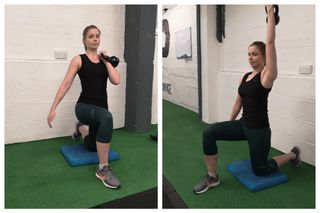
How to:
- Start with a knee at 45 degrees
- Brace the abs and glutes
- Keep the weight close to your body, pressing into your shoulder
- Press straight up
- Return to the starting position
- Repeat
Make it easier:
- Start with a can of soup
Make it harder:
- Try the same movement, standing
- Move on to using a barbell for a double arm overhead press
Why:
Iaciofano recommends you start with a single arm move, telling us: "I wouldn't give a beginner a double arm overhead press, they may not have the stability and stiffness required through the core, to brace, which can then lead to compensation and sagging in the back.
"A single arm half kneeling variation is a good start. Similar to a push up, it helps build core stiffness and it's progressive. Anyone from a beginner to an elite rider could benefit."
Pull movements
Pull-up
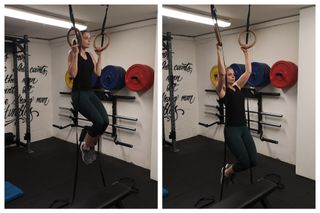
How to:
- You can use a bar, or rings as shown - whichever you've got available. A lot of parks have basic gym equipment including a pull up bar!
- Hold on to the bar/rings and pull yourself up
- Lower until your arms are almost completely straight
- Pull yourself back up
Make it easier:
- Full pull -ups, with complete extension through the arms, are really challenging - particularly for women who statistically have less upper body strength and more body fat. If you can't do full pull-ups, start with eccentrics, where you pull yourself up, gradually lower to full extension, return to the ground and then start again
Make it harder:
- If you're confident you're getting full extension, add a weight around your waist. You might need to do weighted pull-ups as eccentrics (described above) for a few weeks until you can complete them fully with the weight
Why:
"You can do this with limited equipment, and you can progress it, it's hard enough for most people," Iaciofano says, with a smile.
"It involves the lats [latissimus dorsi], which stabilise the pelvis, which will help you to transfer more force through the pedals."
Single arm row
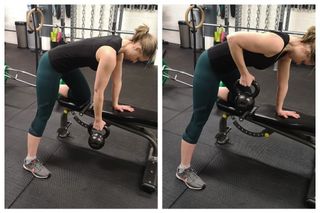
How to:
- Place one knee on a bench, with your other foot on the floor, alongside it
- Push into the bench with your resting arm, bracing your stomach muscles
- Pull the weight towards you, bringing your elbow back
- Don't allow the lower back to dip
- Return and repeat
Make it harder/easier:
- Add or subtract weight!
- If available, use a barbell, rings or TRX bands for horizontal rows - the movement is similar but you're using both arms and working with your body weight
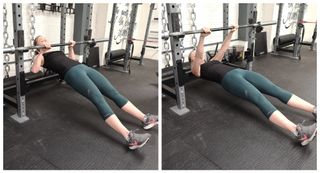
Why:
"A single arm row will still target the mid-back muscles, which can become quite weak for anyone who sits at a desk all day, or hunches over a bike," Iaciofano.
If you're using a gym with a barbell, rings or TRX equipment, he'd recommend a horizontal row too.
Hip dominant movements
The hip area can be broken down into the hamstrings and glutes, so we've looked at them as separate entities - and they're certainly both important.
Cyclists might want to include two hip movements to each knee dominant exercise.
"Even though it is generally taught that best practice is to push through the pedal stroke, most riders dominate with the push. The hamstrings and glutes are often comparativly weak, which can result in knee pain - so pulling exercises which focus on the hamstrings and glutes are really important to cyclists," Iaciofano explains.
Hamstrings: Sliders
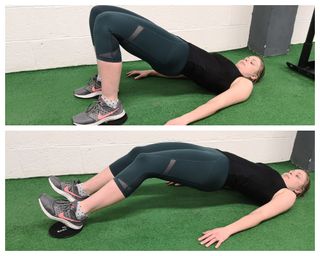
How to:
- A set of sliders will cost you around £5 - every living room should have a pair!
- Place your heels on the slider
- Bring your bum up into a glute bridge
- Push your heels away from you
- Return to start
- *Pro tip: never walk over the sliders in the gym, catching one with your foot - you will go flying into the air and land with a thud
Make it easier:
- Swap the sliders for a swiss ball - this takes your legs further from the ground and makes the exercise a bit easier
Make it harder:
- Move the sliders further from your body in the outward movement, pause for a few seconds at your greatest extension
Why:
Your hamstrings will let know they've been worked!
Hamstrings: Romanian deadlift
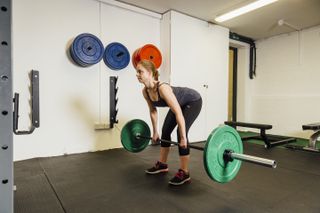
How to:
- Start with soft knees
- Pull the bar into you, push the hips back and lower the bar, You should feel it in your hamstrings and glutes
- Continue to drop the bar until you reach the end of the range of motion in your hamstrings
- If you feel any curvature in your lower back, you've gone too far
- Return to the start position
- To make it easier or harder, up or lower the weight
Why:
"A deadlift targets all the right muscles and you have to keep tight through the abs to ensure good form," Iaciofano says.
This one comes with a warning, though: "It is really best done only if you've had a coach check your form. It's easy to get it wrong and hurt your back. If you are going to do them, don't overdo the weight," the expert tells us.
Glutes: Hip thrust
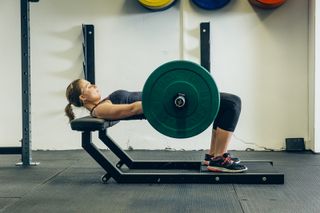
How to:
- Best done in the gym with a bar and weight, but at home you'll get a benefit from body weight initially, or can use a kettlebell until your loading needs become too heavy to do this in comfort. Progression with a single leg variety (below) could be done at home with minimal weight.
- Rest your shoulders on a bench (or sofa/chair at home), start with your feet and bum on the ground, knees bent
- Squeeze your glutes and lift up until you're like a straight table top, be careful not to overextend in the lower back creating an upward rise
- Return to start and repeat
Make it easier:
- Use your bodyweight only and hold for 20-30 seconds
Make it harder:
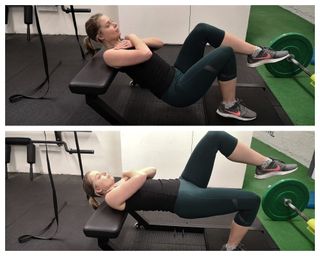
Go single leg. Always start by working the weaker leg, and complete the same reps each side. There's two options:
- Start with both legs on the ground, rise up, then lift one leg up for the lowering stage (easier)
- Start with one leg on the ground, and the other raised, lift yourself up and return to the floor (harder)
Why:
Anyone can do a body weight double leg hip thrust, but you can load it up to meet serious strength goals. Going single leg will highlight any in-balances, allowing you to work on levelling up.
Knee dominant movements
Squat (front squat, split squat, pistol squat, single leg squat)
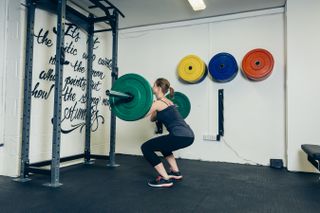
How to perform a front squat:
- Place the bar across the front of your shoulders, with your fingertips under the bar just outside your shoulders
- Push your elbows up, keep your chest up and brace your core
- With feet hip width apart, bend at the hips, push your bum back, don't let your knees drive in
- Drive up through the glutes to return to the start position
Make it harder:
- Try single leg squats, with a view to working towards a pistol squat - where you straighten one leg in front of you and lower until the straightened leg is level with the floor, then return to standing. Don't expect a pistol squat to happen overnight!
Why:
There are many squat varieties, so there's lots to keep you entertained. Iaciofano explains: "Squats work your entire core - your abs have to work to keep you standing up. Single leg squats are particularity good if you've got an in-balance to work on, most cyclists will have one leg that's stronger."
Step up
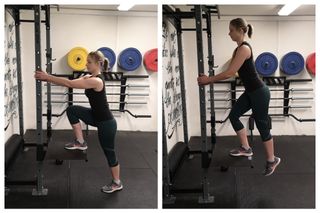
How to:
- You can do this with any raised block at home
- Start with one foot on the block
- Squeeze your glute and lift the rear leg up to meet the other foot
- Don't spring off the rear leg, raise your toes before moving if it helps you to avoid it
- Keep squeezing the working glute, lower your leg back down to the ground
- Focus on pushing your knee out, tracking over the toes, throughout the downward movement
Make it harder:
- Hold a dumbell
- Go more slowly on the way down
Why:
Weak glutes can result in an inward pedalling motion, which can lead to injury. This forces the glute to work to keep the knee in position and also works the quads.

Thank you for reading 20 articles this month* Join now for unlimited access
Enjoy your first month for just £1 / $1 / €1
*Read 5 free articles per month without a subscription

Join now for unlimited access
Try first month for just £1 / $1 / €1
Michelle Arthurs-Brennan the Editor of Cycling Weekly website. An NCTJ qualified traditional journalist by trade, Michelle began her career working for local newspapers. She's worked within the cycling industry since 2012, and joined the Cycling Weekly team in 2017, having previously been Editor at Total Women's Cycling. Prior to welcoming her daughter in 2022, Michelle raced on the road, track, and in time trials, and still rides as much as she can - albeit a fair proportion indoors, for now.
-
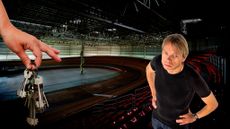 You might think racing in the UK is on a downward trajectory at the moment, but we’re not back to 2005 just yet
You might think racing in the UK is on a downward trajectory at the moment, but we’re not back to 2005 just yetWe can still fill a velodrome, which, is an improvement on CW columnist Hutch's experience
By Michael Hutchinson Published
-
 Matteo Jorgenson rules out Tour de France leadership after Jonas Vingegaard's withdrawal from Paris-Nice
Matteo Jorgenson rules out Tour de France leadership after Jonas Vingegaard's withdrawal from Paris-NiceThe American is on the cusp of a second consecutive victory at the Race to the Sun
By Tom Thewlis Published
